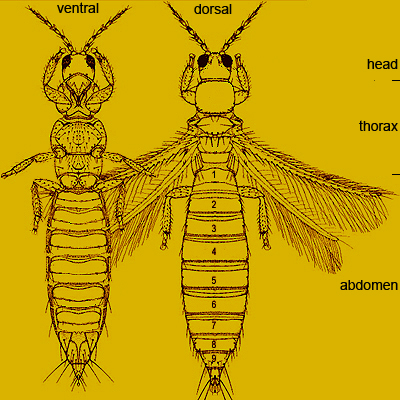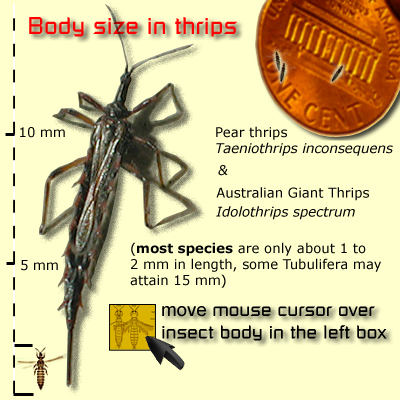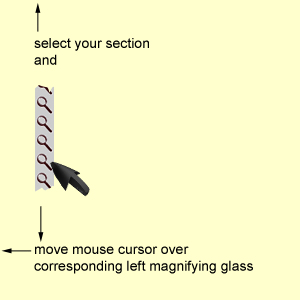| Particular attention is given to key characters, because it is essential that they be interpreted correctly. You can use additional photographs within the key when you are unsure of the character state discussed in the text. A double click on the character state thumbnail opens the related character state photograph and the mouse cursor will surround the important specific character state. | ||

|
 |
|
| (antecosta-campaniform
sensilla)
-> (cilia-craspedum) -> (cross
vein-furca) ->(gena-maxillary stylets)
-> (maxillary palps-ocellar setae) -> (ocellar triangle-posteroangular) -> (posteromarginal-setae) -> (spine-wing retaining setae) |
|
OCELLAR
TRIANGLE: Area on the dorsal surface (vertex) of the head
of winged adults delimited by the 3 ocelli. |
 |
OCELLI: Simple eyes
of adult winged thrips, typically three in a triangle on the vertex,
with one anterior median and two lateral ocelli. |
||
OVIPOSITOR:
Ventral paired sclerite constructions of the VII and VIII abdominal segment
for laying eggs. |
||
PARAGLOSSA: A pair of
lobes distolateral on the prementum, lying outside the glossae. |
||
PEDICEL: The narrowed
base of the 1st antennal segment of the flagellum (=3rd antennal segment). |
||
PEDICELLUS:
The second segment of the antenna, with intrinsic muscles, forming the
pivot between scape and 3rd antennal segment. |
||
PLEURITE:
Lateral sclerite between tergite and sternite. |
||
PLEUROTERGITE:
Dorsolateral sclerite of the two lateral sclerites, closest to the tergite. |
||
POSTEROANGULAR:
(Latin, posterior = latter) behind the midline, caudal, angular = corner,
for example: posteroangular setae = setae inserted on the posterior corners
of a sclerite. |
Gordh, G & Headrick,
D (2001): A dictionary of Entomology. CABI Publishing, Oxon & New
York, 1032 pp. |
Gullan, PJ & Cranston,
PS (1994): The Insects: An Outline of Entomology . Chapman
and Hall, London. 491 pp. |